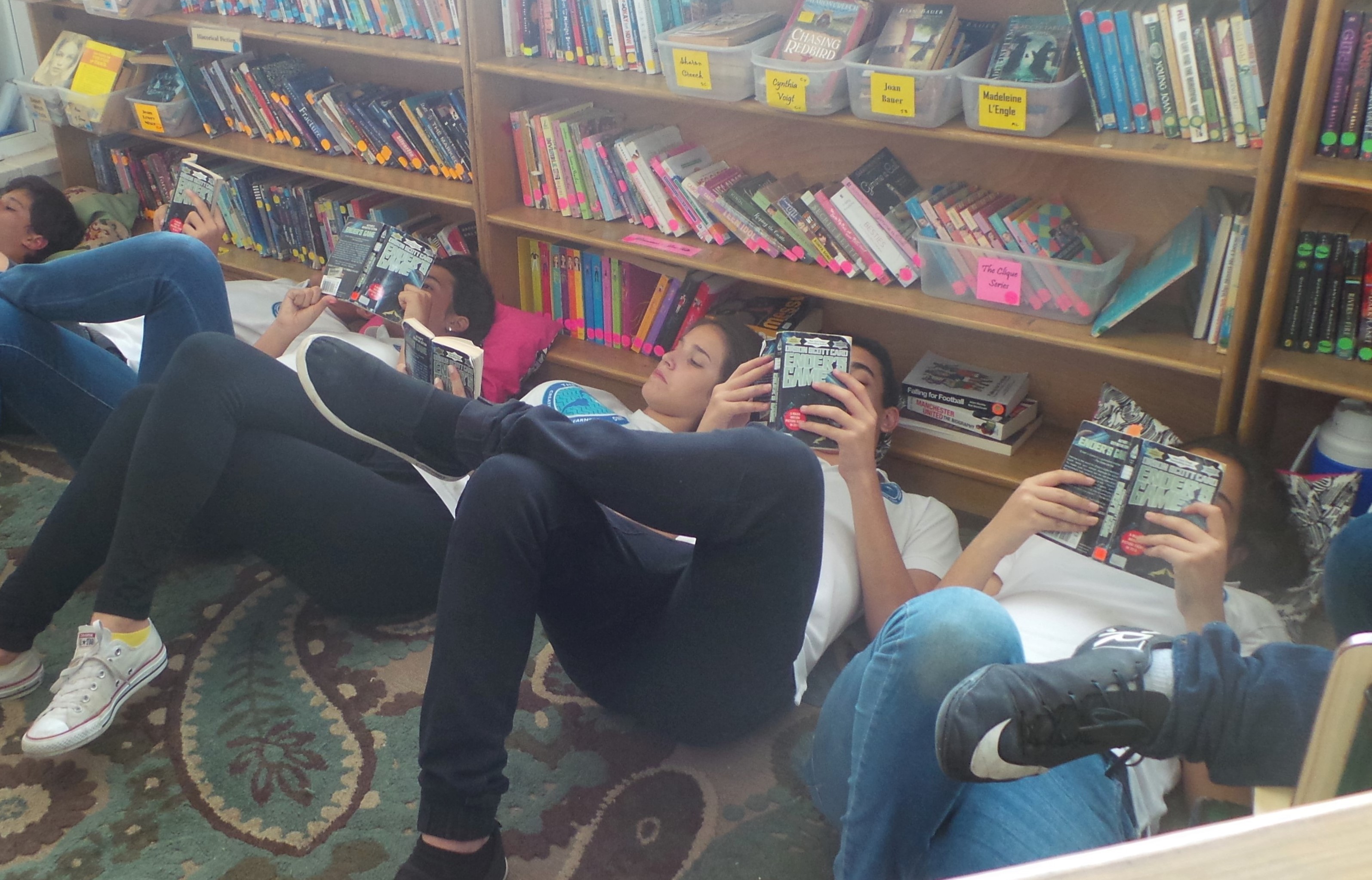Reading Aloud in Secondary
 Recently on a Twitter chat, some teachers raised the question of reading aloud to students, mentioning that it rarely happens beyond fourth grade. I was a bit surprised, as I thought reading aloud in secondary was becoming more common.
Recently on a Twitter chat, some teachers raised the question of reading aloud to students, mentioning that it rarely happens beyond fourth grade. I was a bit surprised, as I thought reading aloud in secondary was becoming more common.
Years ago, when I was completing a master’s degree in education, one of our professors introduced me to the idea of reading aloud to adolescents. Because my students were not motivated to read and and read aloud is known to increase student engagement, I was eager to give it a try. I was told that by modeling fluency we teach students to become fluent readers and, as we stop occassionally to highlight vocabulary or to make inferences, we increase reading comprehension. All of this made sense to me, but there were a few reasons that I was hesitant to try.
I was working in a very conservative school at the time, and was already considered an “out there” teacher because my students’ desks were not arranged in rows. My students hadn’t been read to since about second grade and I can tell you I was very nervous about reading aloud to them — I was pretty sure they would make faces and say I was treating them like babies. But I figured that most of my students hated reading anyway, so I didn’t have much to lose. I was willing to stick my neck out and give it a try.
I went out and bought a secondhand carpet, a grayish thing I found hanging on the side of the road. At home, I scrubbed it a few times, only to discover that it was a lovely shade of green.
I took that carpet to school and gave it a home in a corner of my classroom, adding a few cushions. I chose my first novel, making sure it was fast-paced and suspenseful. And then, mustering up all my courage, I asked students to meet me on the rug for a read aloud. As I had predicted, they groaned and rolled their eyeballs and, finally, reluctantly, some of them came to sit on the carpet. Others lagged behind, looking less than enthused — all my worst worries were coming true. But I smiled and told them to make themselves comfortable.
I began to read.
I tried to make the words come alive for those students who didn’t like reading. I modelled character voices as I read dialogue. I let my voice hush to lower tones as the chapter became more suspenseful. I watched students lean forward, opening to the story, all ears on me. I spent about 10 minutes reading and watched those 15-year-old students become engaged. Many of them had forgotten the power of story and for those 10 minutes a day, they could enter the world of their imagination.
We read everyday for 10 – 15 minutes and the atmosphere in my class changed. I had a classroom library that, up until that point, most of my students had ignored. After a couple of weeks of reading aloud, a few students started asking for recommendations for books. Kids began to discuss what they were reading — and slowly, slowly, a culture of reading started to develop.
As we came to the end of that first book, I stopped at a particularly suspenseful scene and said, “That’s all for today. We’ll finish reading this tomorrow.” My students begged me to keep going. I held back and said, “Give me one good reason to keep reading.” They told me they wanted to hear the end, they couldn’t wait, it was so good…. and then my most reluctant reader raised his hand. “Yes, Juan?” I asked.
“Because this is the first time in my life that I’ve ever wanted anyone to keep reading.”
That was enough for me. We ignored the bell and read till the end of the book.
I’ve been reading aloud to high school students ever since. Now I’m curious. How many of you read aloud to your young adult students? And if you don’t, would you be willing to give it a go? I’d love to hear your thoughts.

I love reading to students of all ages. I’ve read to college students.
Hey Tim, great to hear from you! How do your college students respond?
I think reading aloud is great, but how do you justify this to your admin when they expect you to hit specific standards and have your students being able to read independently in order to show mastery on a test? All advice needed please.
Mirna, this is a great question. If you’re doing a shared reading book, you can read part of it aloud (I like to read up to a point where students are dying to know more) and then send them off to read on their own. In my experience this helps reluctant readers have a reason to read and many students who avoid reading, will give it a try. Modeling what good reading sounds like also helps readers do a better job independently. They can hear the way you use voices to make the reading come alive. Also stopping to clarify, question or predict helps them see what good readers do. Saying, “I didn’t really understand that. Let me go back and read it again.” shows readers that it’s okay to not understand and reread (I find that weak readers rarely do this). Read aloud doesn’t have to take long, and I find that, rather than making readers dependent on you, it helps students become stronger independent readers. I hope that helps….